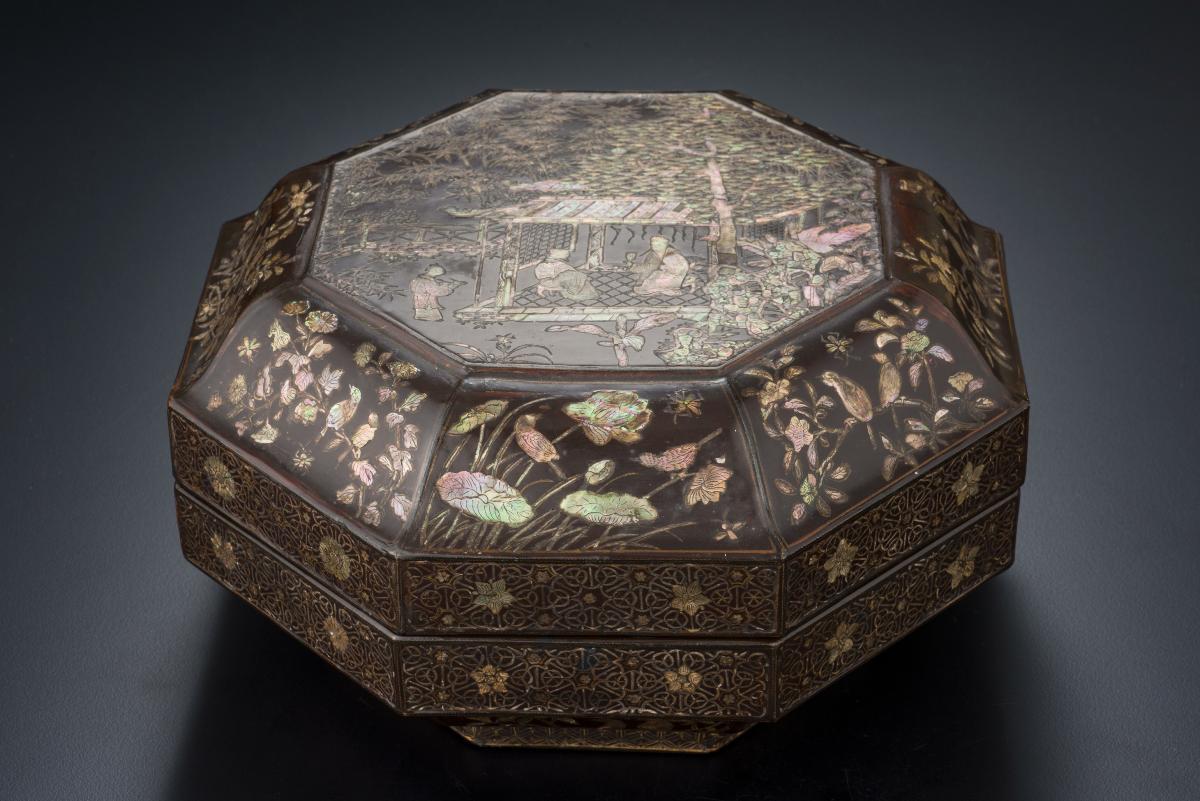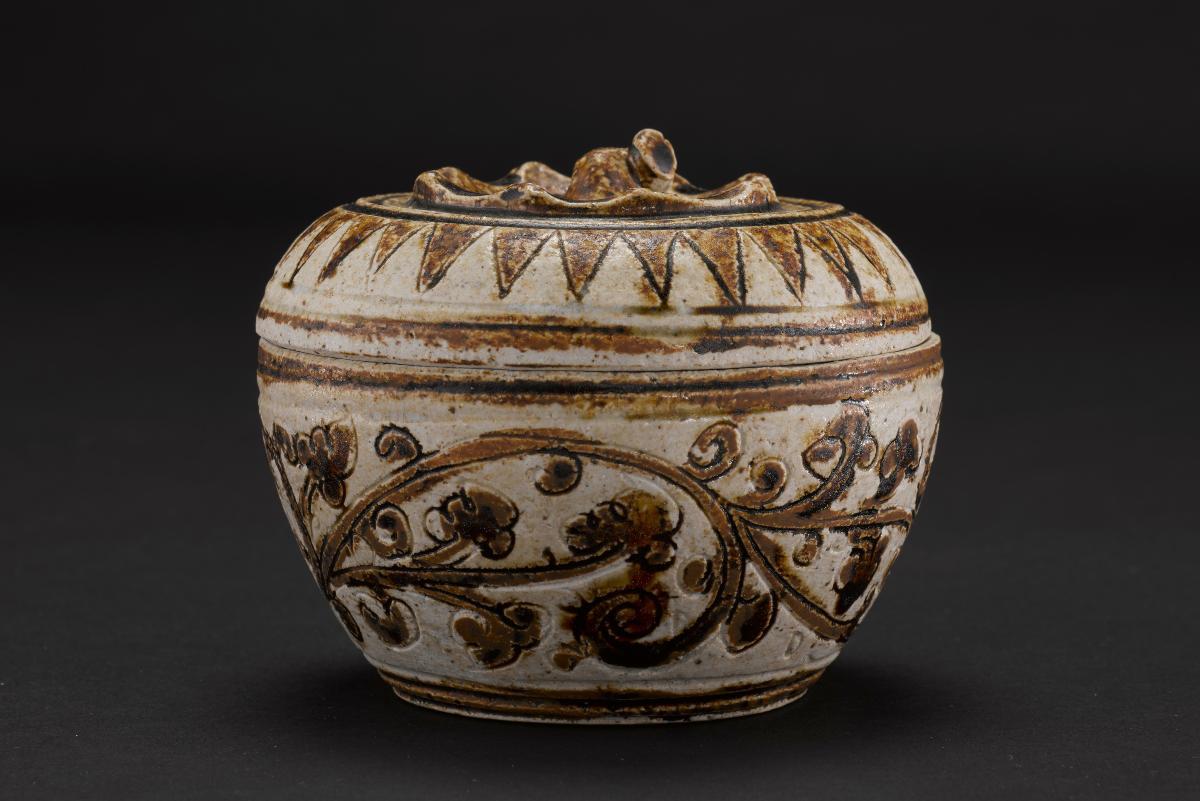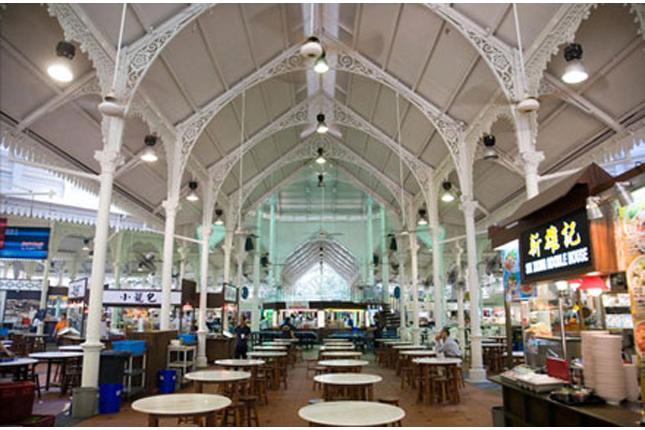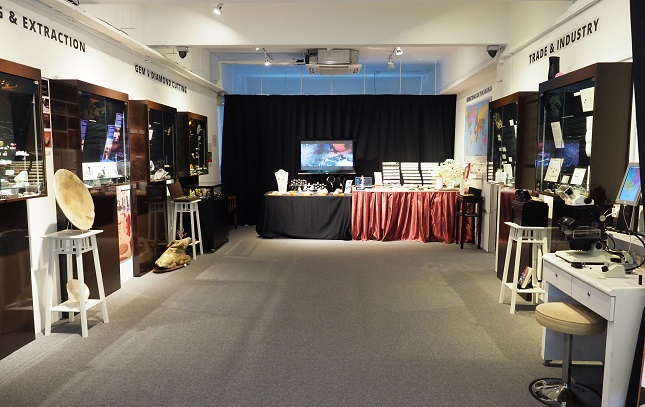This refined mother-of-pearl and silver inlaid lacquer octagonal box has a lobed cover with flat top and convex sides. The skilfully applied inlay on the central panel depicts a tranquil scene of the literati activity. Two scholars seated in a garden pavilion amist bamboo, banana trees, and rocks await their attendant approaching with bowls of refreshment on a tray. The subtle facial expression of the scholar is revealed vividly through the engraved details. The furniture and pavilion in the courtyard illustrate typical furniture and architecture of the 14th and 15th centuries, which can also be seen in early-Ming woodblock prints. The box is encircled by panels, each of which encloses a pair of birds. The peony border of the box links it visually to ornamental patterns in contemporary Korea and the Islamic world. Used in the Japanese tea ceremony, this lacquer box was also probably used for storage in the late Imperial China.Indeed, octagonal covered boxes have been common since the Tang until Song. They were mainly made of metal. However, the lotus shape is rare after the Yuan dynasty.


















